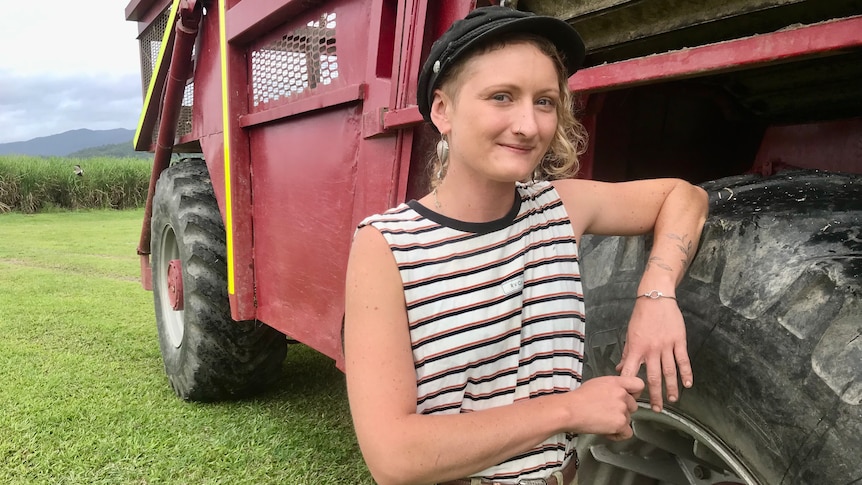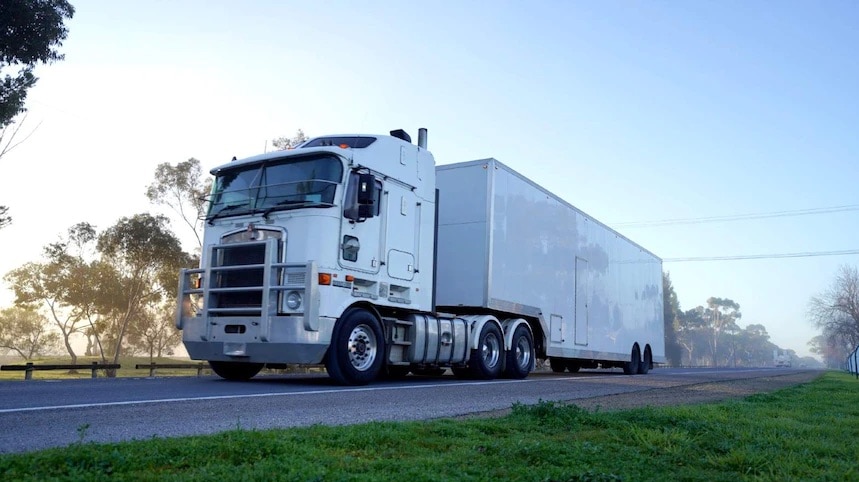Maneuvering a 10-tonne tractor over rough terrain and tipping sugar cane into a train carriage may require skill and concentration, but Jasmine Cartwright and Elsa Tickler have taken it like ducks to water.
It therefore came as a bit of a surprise when the pair discovered they were the first women to apply for the job on Matt Watson’s Mossman farm in far north Queensland.
“Definitely, women can do the job just as well as men,” 28-year-old Ms Cartwright said.
“I’ve never driven heavy vehicles before starting this job and, prior to this year, never really imagined that I would go down this path for work, but I’m really happy I did.
“It takes a bit of time to practice and get used to the trucks because they’re just unique in the way that they run, but women should absolutely give it a go.”
Ms Tickler, 27, is from south-east Queensland and previously worked as a cook on a prawn trawler.
“I think learning to drive heavy machinery is a great skill set … and it’s something that will be so valuable in my life and future,” she said.
“I think I’ll be back for the next season.”
With no regrets
Labor shortages have been a growing challenge for the agriculture industry, with young women among those most likely to leave rural areas.
Ms Cartwright, who is also from the state’s south-east, says she has no regrets about moving to Mossman this year to work.
“The environment we’re working in, the scenery, it’s so beautiful driving around different farms in Mossman and the Daintree,” she said.
“Sometimes it’s like a wildlife documentary happening in front of you: we see snakes and wild pigs and so many bandicoots and dingoes and kangaroos—crocodiles even.
“It’s really challenging because the roads are obviously a bit off-road and you’re driving a really heavy vehicle, so it’s just a new challenge, but it’s really fun.”
Driving the locomotive
After the cane is successfully tipped into train carriages, another young woman has the job of delivering it safely to the Mossman sugar mill.
Sophie Wright, 22, gave up her job as a makeup artist in Adelaide and moved to Mossman four years ago after falling in love with the region.
She has been working as a train driver’s assistant for Far Northern Milling and is currently training to be a locomotive driver.
Ms Wright said it had been a big career change but one she was glad she made.
“I think it’s something I love doing a whole lot more. You know, I feel like it’s meaningful,” she said.
“I honestly think the scenery is amazing. You see really nice parts of Mossman. We have to cross a few bridges on the way and there are stunning creeks.”
Ms Wright drives the cane train under supervision and helps with maintenance while logging the 200 hours required to get her ticket, which she hopes to achieve by next year.
“When we do have maintenance days, or when there’s days that the mill needs to stop for whatever reason, we help out John, who is our mechanic here, greasing the locos,” she said.
“We have to change the grease bombs. We have to make sure all the oils and the final drives and everything’s topped up and working well.
“We also have maintenance days where we have to adjust the brakes and put new ones in.”
On the right track
Ms Wright says another benefit to driving cane trains is that the job is seasonal, which means she has six or seven months off each year that allow her to travel.
Last year, she even worked on a snorkel tour boat on the Great Barrier Reef.
Ms Wright said it was no surprise that the job was attracting a growing number of women.
“When I started, I was one of the only females working on the trains,” she said.
“Now as the years have gone past, there are more and more women who are actually coming in and learning to drive, and learning to be driver assistants as well, which is really good to see.
“I’ve actually heard a few people say women are a little bit more careful with the trains. They pay attention and they’re very careful.”
Ms Wright said young women should not limit their imaginations when it came to career choices.
“You can train to be anything that you want to be, if you put your mind to it,” she said.
“[The cane industry] is a really open industry.
“I think if you want to do it, then just go for it. I’ve learned so much this year and anyone can do it really.”
.

